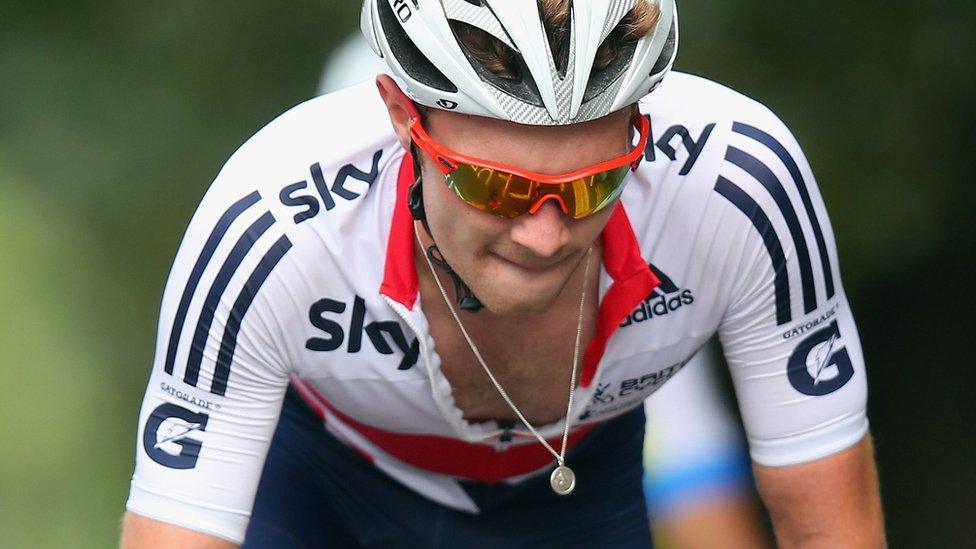Velothon Wales - and how cycling has captured hearts, minds, lungs and legs
- Published

BBC Wales sports reporter Steve James says cycling is not just for the professionals
If I had gone for a Sunday morning ride around some of my favourite south Wales roads 10 years ago, I would have passed barely a handful of other pedalling pleasure seekers.
It was an exclusive and often misunderstood, even unwelcome club.
Maybe I would catch up with someone and ride along for a few miles exchanging friendly conversation. Or perhaps there would be a subtle wave or a barely noticeable nod as a rider passed the other way.
We both knew the secret. Cycling is fun. It is healthy, sociable, challenging, invigorating, practical. Cycling is whatever you want it to be.
In the last few years though, the secret is out. Now I never leave my house, on foot, by bike or in the car without passing a seemingly ever increasing number of riders. All ages, genders, shapes and sizes.
Yes, there are the oft-derided "middle-aged-men in Lycra" spending their disposable on flashy steeds instead of sports cars and motorbikes. Sneered at by the old guard for having "all the gear, no idea".
Sniggered at by the public as they clatter across the pub in cycling shoes and skin-tight uniforms that reveal more miles and a fewer pints might be better.
But cycling is truly democratic. Cheap bike, flash bike? It does not matter. All day epic or short spin? Fast or slow? Serious or sociable? It does not matter.
Remember, cycling is whatever you want it to be. Young wannabe racers, middle-aged mothers, weather-beaten old-timers, they will all get a smile from me.
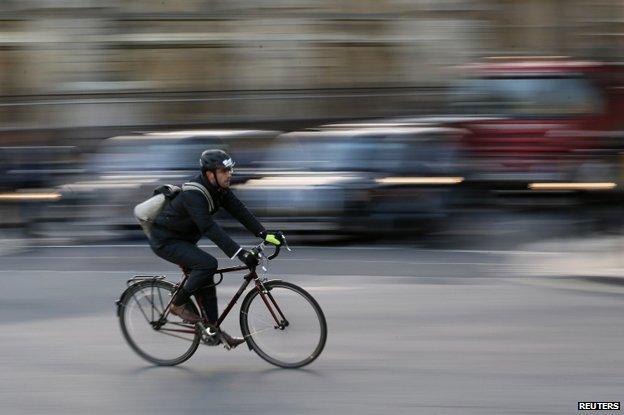
Wales has been "bitten" by a bike bug, says James
This weekend there will be 15,000 riders on those roads in south Wales, paying £50 for the privilege of spending five or six hours in the saddle.
At the same time 100 professionals from around Europe and the UK will cover a greater distance, 120 miles, in far less time.
All around the course the racers, the weekend warriors, the charity riders and those just revelling in riding on temporarily car-free routes will be cheered by thousands at the roadside.
Wales has been bitten by the bike bug.
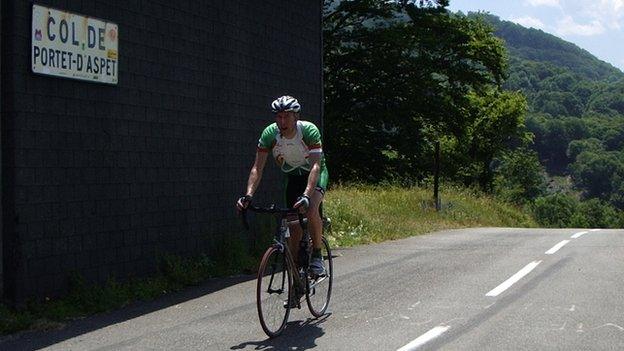
For James - the love affair with cycling started in the 1970s and has 'taken over his life'
So why? What has happened in the last decade? How is it that cycling has gone from the margins to the mainstream?
Back in the 1990s road cycling seemed almost dead in the UK. Bike shops kept themselves open on the back of the new mud and mountains craze.
It was the Noughties before road bikes became really sexy again, all space age titanium, cutting edge carbon and gadget enhanced.
In Wales there was a slow but steady rise in the number of people getting out on their bikes. Whenever Nicole Cooke grabbed more headlines, I would see a few new faces in the lanes.
Then in 2008 she grabbed the Olympic gold that began the avalanche. From the track to Le Tour, Britain was a successful biking nation.
It was 2012 that really got bums on saddles big time. Sir Bradley Wiggins won France's famous maillot jaune and the crowds flocked to London to see him become an Olympic champion too. And people rode the roads the racers raced.
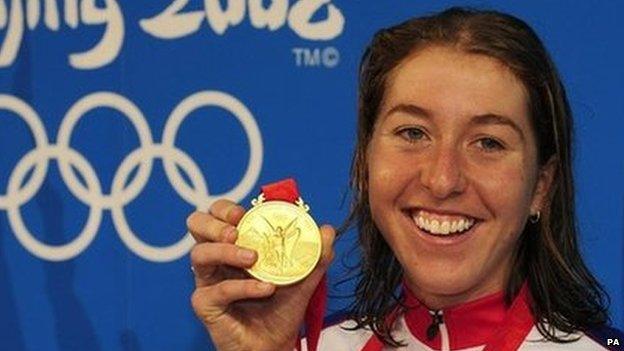
Nicole Cooke with her gold medal following her victory in the women's road race at the 2008 Beijing Olympics
Can you imagine just anyone who fancies it being allowed to go out and play rugby in the Millennium Stadium just before a Six Nations game? Or turn up and have a kickabout at Wembley or the Bernabeu whenever they feel like it?
With GPS tracking devices feeding social media sites, any ride any day of the week can be compared with friends and even to the performances of "the pros".
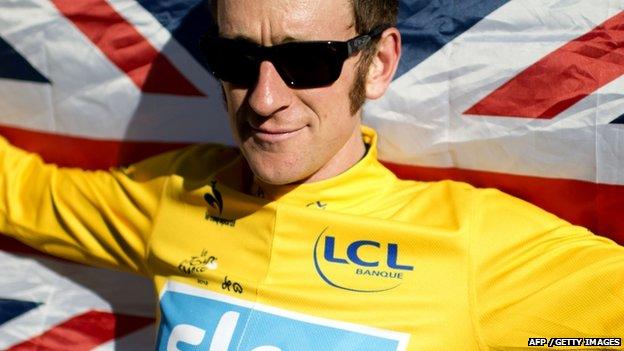
In 2012 Bradley Wiggins became Britain's most decorated Olympian with victory in the time trial
This is part of the appeal to the ever growing numbers of riders in recent years crossing the Channel to ride the routes of Europe's Grand Tours.
In 2004 council worker and bike enthusiast Lou Lusardi (the Italian heritage obvious in the name) decided there was an appetite in Wales for Italy's Gran Fondo, and the Dragon Ride was born.
The 12th edition was held over the hills flanking the Rhondda Valleys just last week with one of the 5,000 available places again like gold dust.
It has been joined on a packed Welsh calendar by many others including The Monster (Llangadog, July), The Daisy Chain (Builth Wells, May), The Devil's Challenge (Llanwrtyd Wells, July).
Which brings us back to Velothon Wales. An initial 12,000 places were made available at the end of last year, within weeks they were gone. The ride will be one of the world's largest with more entrants than the famous Etapes du Tour that follow stages of the Tour de France.
The chance to ride with so many others, on carefully marked traffic-free routes backed by feed stations and medical and mechanical back-up is obvious.
And next week there may be a few sore bodies that will not feel like getting back on the bike, but there will be many, many more inspired by what they see this weekend. I am certain the number of cyclists in Wales will grow even more.
Whether it is town or country, the roads and lanes of Wales are full of groups, pairs and individuals riding bikes for fun. No more long hours in the saddle for me with barely a like-minded soul with whom to exchange a knowing acknowledgment. The secret is out.

Intrigued and inspired in the 1970s by Eddy Merckx, Francesco Moser and most of all diminutive Belgian climber Lucien Van Impe, Steve James fell in love with continental cycling and pretty soon after bikes took over his life.
Over the past 40 years he has ridden on road, off-road and on tracks around the world. Besides countless hours watching others ride, he has commuted, raced, written a book on cycling and collected way too many bikes and cycling magazines.
He regularly tweets about cycling (and other things) @GMWalesSport
- Published9 June 2015

- Attribution
- Published6 June 2015
